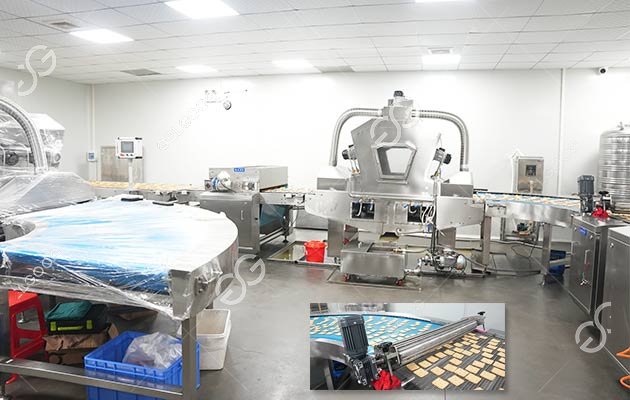What is the Cost of Biscuit Production Line?
The biscuit production line is designed to deliver a consistent, high-quality biscuits at a pace that meets consumer demand. But what does it truly cost to set up and operate a biscuit production line? Let's delve into the various factors that contribute to the overall cost.

1.Initial Investment:
The initial expense associated with procuring a biscuit processing line is influenced by the desired size and technological sophistication of the setup. A fundamental, semi-automated setup might require an outlay of several thousand dollars, whereas an advanced, fully automated line could entail an investment reaching several million dollars. This initial cost encompasses the acquisition of essential equipment for processes such as mixing ingredients, dough formation, product shaping, baking, cooling, and packaging. Moreover, one must also consider the additional expenses related to the setup's installation and the process of bringing the line into operation, which can significantly impact the total initial cost.
2.Raw Materials:
The procurement of raw materials constitutes a substantial and continuous operational cost. Essential components for biscuit manufacturing, such as flour, sugar, butter or alternative fats, eggs, and a variety of other additives, are subject to market price variations and quality grading. In order to effectively control costs, producers frequently engage in bulk purchasing agreements with suppliers to secure reduced prices or explore substitute ingredients that maintain quality standards while presenting a more cost-effective option.
3.Labor and Training:
Operating a biscuit production line requires skilled labor, from machine operators to quality control technicians and maintenance staff. The cost of labor includes wages, benefits, and training. While automated lines reduce the need for manual labor, they also require specialized technicians who can troubleshoot and maintain the advanced machinery, necessitating ongoing training and investment in human resources.
4.Energy and Utilities:
The process of producing biscuits demands a significant amount of energy, with multiple stages like baking, mixing, and the operation of packaging equipment all relying on a continuous power source. The expenses associated with electricity or natural gas consumption can become quite considerable, particularly for operations on a grand scale. Additionally, the use of water for the purposes of sanitation and temperature regulation in cooling mechanisms contributes to the overall operational expenses. To mitigate these costs, the adoption of energy-saving technologies and the implementation of resourceful practices are advisable, offering potential long-term savings on utility bills.
5.Maintenance and Repairs:
Keeping a biscuit production line running smoothly requires regular maintenance and occasional repairs. The cost here includes parts, labor for maintenance staff, and potential downtime when equipment is out of service. Preventative maintenance programs can help to minimize these costs and ensure the longevity of the machinery.
6.Regulatory Compliance and Quality Control:
Food safety regulations require manufacturers to invest in quality control measures, from regular testing of products to ensuring the production facility meets stringent hygiene standards. These costs can include lab testing, certifications, and audits, all of which are essential to maintain consumer trust and comply with legal requirements.
7.Marketing and Distribution:
Finally, the cost of getting the biscuits from the production line to the consumer's table is not insignificant. This includes packaging, branding, marketing campaigns, and distribution logistics. While these costs are often seen as separate from production, they are a crucial part of the overall cost structure.
 Email:
lisa@gelgoog.com
Email:
lisa@gelgoog.com Phone:
0086-155-1557-1373
Phone:
0086-155-1557-1373




 Language
Language


